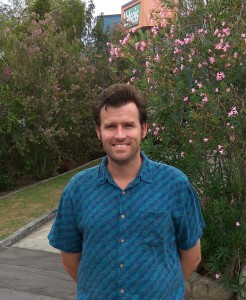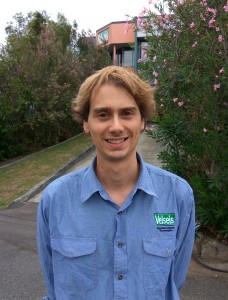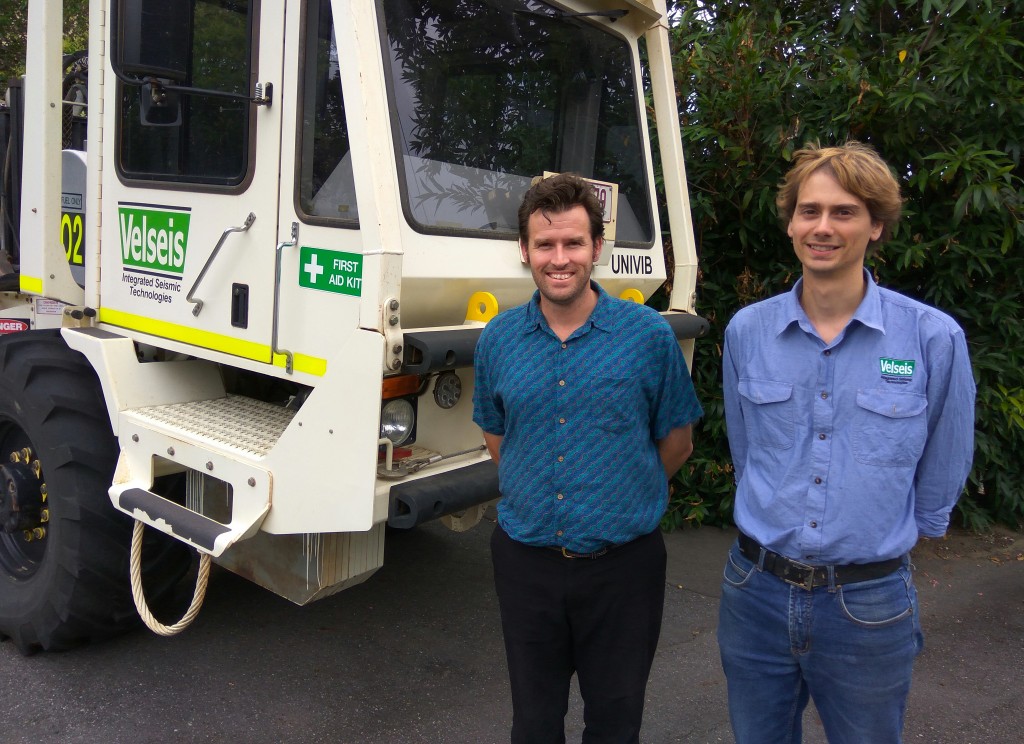Congratulations to Shaun Strong and Alan Meulenbroek on the successful completion of their PhD and Masters Degree respectively. We are very pleased to have such talented geophysicists working in our research, acquisition, and processing departments.
 Shaun Strong graduated from University of Queensland with a first-class honours degree in geophysics (B.Sc.(Hons)) in 2003. After a short period doing gravity acquisition, he joined Velseis, working in production data processing and more recently R&D. Currently, his primary focus is on multicomponent research, including acquisition, data processing, algorithm development, and interpretation.
Shaun Strong graduated from University of Queensland with a first-class honours degree in geophysics (B.Sc.(Hons)) in 2003. After a short period doing gravity acquisition, he joined Velseis, working in production data processing and more recently R&D. Currently, his primary focus is on multicomponent research, including acquisition, data processing, algorithm development, and interpretation.
Thesis Title: “Resolution Enhancement in Shallow 3D-PS Seismic Reflection”
Short Abstract:
“This thesis aims to advance methodology for acquiring and processing 3D multicomponent (PS) seismic data for shallow (<300 m) exploration targets. The primary focus is to improve seismic resolution, and hence geological interpretation, for coal-scale targets.
This research has demonstrated that achieving good PS resolution is challenging, and requires careful consideration of multiple factors in the design, acquisition and processing chain. Of particular interest are the methods used to corrected for near-surface statics and complex velocities. The range of methodologies demonstrated here will further advance the practical application of PS reflection at the coal scale.”
 Alan Meulenbroek graduated from the University of Queensland in 2006 with a Bachelor of Applied Science in Geophysics with first class honours. Since then, he has been employed at Velseis, undertaking various field roles ranging from juggie, to line-boss and observer for 2D crews. During that time, he also worked in the R&D department with research focusing on multicomponent seismic and geophysical inversion. Since late 2015, Alan has worked in Velseis Processing as a data processor and interpreter for 2D and 3D data.
Alan Meulenbroek graduated from the University of Queensland in 2006 with a Bachelor of Applied Science in Geophysics with first class honours. Since then, he has been employed at Velseis, undertaking various field roles ranging from juggie, to line-boss and observer for 2D crews. During that time, he also worked in the R&D department with research focusing on multicomponent seismic and geophysical inversion. Since late 2015, Alan has worked in Velseis Processing as a data processor and interpreter for 2D and 3D data.
In 2016 he obtained his master’s degree from UQ with a thesis titled “Inversion of seismic refraction amplitudes for near-surface velocity control”.
Short summary of thesis:
Knowledge of near-surface seismic velocities is important for processing deeper seismic imagery, and also for geotechnical purposes. This thesis examines a novel approach for estimating velocities via analysis of refraction amplitudes. Theory suggests that head-wave amplitudes depend on factors including velocities above and below the refractor. This study demonstrates least-squares inversion of observed refraction amplitudes, aimed at separating the causal parameters. This leads to estimation of P-wave velocity in the layer above the refractor. Analysis of synthetic and real data indicates that the inversion methodology is viable. The practical evaluation clearly indicates that in reality observed refraction amplitudes are strongly influenced by factors not included in classical theoretical models.



